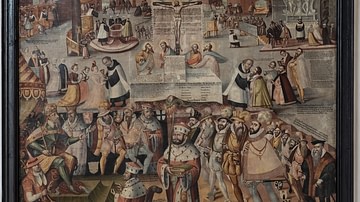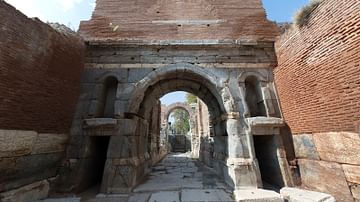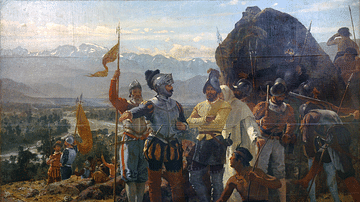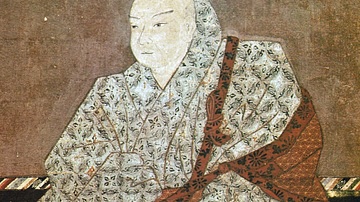Search
Search Results

Definition
Augsburg Confession
The Augsburg Confession is the affirmation of faith of the Lutheran Church written by Philip Melanchthon (l. 1497-1560) and presented at the Diet of Augsburg in June 1530. The document attempted to reconcile differences between the Lutherans...

Image
The Seljuk Sultanate of Rum, c. 1200
This map illustrates the rise and growth of the Seljuk Sultanate of Rum (the name "Rûm" was a synonym for the medieval Eastern Roman Empire and its people, a usage that continues in modern Turkish. It originates from the Aramaic and Parthian...

Image
Roman Province Bithynia et Pontus c. 200 CE
The Roman province of Bithynia et Pontus, established in 63 BCE after the defeat of Mithridates VI of Pontus, was a prosperous and strategically significant region by 200 CE. Located in northern Anatolia along the southern Black Sea coast...

Image
Iznik Wall at Lefke Gate
Lefke Gate, a part of the ancient walls of the city of Nicaea (modern day İznik, Turkey).

Definition
Plebeians
Plebeians were members of the plebs, the hereditary social class of commoners in ancient Rome. Their exclusion from political power by the patricians, who claimed to be the descendants of the first senators, led to Conflict of the Orders...

Definition
Altamira
Altamira is a Paleolithic cave located in Santillana del Mar (Cantabria region) in northern Spain, containing prehistoric paintings. The cave was inhabited for millennia and so, besides Paleolithic cave art, it contains remains of the daily...

Definition
Repartimiento
The repartimiento system was a distribution of rights to Spanish colonialists and municipalities, which allowed them to extract forced but low-paid labour from local communities in conquered territories. Designed to replace the inefficient...

Definition
Phocion
Phocion (c. 402 – 318 BCE) was an Athenian statesman and military commander who, according to tradition, was made a general a staggering 45 times. A student of Plato and known as 'the Good', his political position was somewhat ambiguous...

Article
Zwingli's Persecution of the Anabaptists
Huldrych Zwingli (l. 1484-1531) broke with the Church in 1522 and defended his beliefs at the First Disputation in 1523, encouraging many people in Zürich to embrace his teachings. Among his followers was a group, soon known as Anabaptists...

Article
Insei: Cloistered Government in Ancient Japan
Insei or 'cloistered government' describes the strategy of emperors during the late Heian Period (794-1185 CE) in ancient Japan where they abdicated in favour of a chosen heir yet still ruled in some capacity, typically after retiring to...